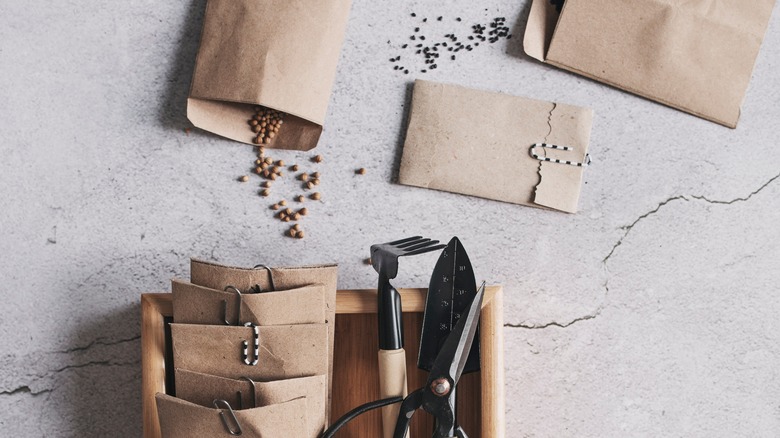A Simple Storage Tip That'll Help Keep Track Of All The Seeds You Have
We may receive a commission on purchases made from links.
Considering how affordable seed packets are in comparison to buying live plants, it can be hard to resist stocking up on seeds when you get a chance. If you are on a seed-saving journey as well, then it often doesn't take long for your seed collection to spiral out of control, taking up way too much space and making it difficult, if not impossible, to find the seeds you want, when you want them. By taking some time to categorize and organize your seeds though, you can far more easily find the seeds you need, saving time and avoiding duplicate purchases. As with any storage and organization system, what works best can differ from person to person, but in addition to making sure your seeds are clearly labeled, and that similar seeds are grouped together, one of the best tips for seed storage organization is locating older seeds toward the front of your seed collection to ensure you grab them first.
There are a variety of great options for what to store your seeds in, and anything from photo storage boxes ($22.99 at Amazon) to glass jars can be used for seed storage. Regardless of what your seeds are stored in, be sure they are kept a cool, dry, and dark area so your seeds last as long as possible. Your refrigerator is an ideal seed storage spot if you have the space.
Organizing and sorting your seeds
You can either keep your seeds in their original packets, or transfer them to a new container like an empty medicine bottle, if you have a lot of those in your medicine cabinet that can be used for seed storage. Regardless of what types of containers you use to store your seeds, be sure they're clearly labeled with at least the type of seeds and either the date they were harvested or the date they were packed. Having all your seed containers or packets clearly labeled will make it much easier and faster to sort and organize them.
If you have a large amount of seeds, then once everything is clearly labeled, create a few basic categories to sort your seeds into. These categories may differ from person to person, depending on what type of plants you primarily grow. For many people, simply sorting seeds into vegetables and flowers may be enough to create manageable piles. Some people with very large seed collections may want to divide seeds further into groups like warm season and cool season flowers. Then, within these categories, order the seeds from oldest to newest and make an effort to grab these older seed packets first. This should ensure you're using up your seeds while the germination rate is still high and you aren't stuck with ancient packets of non-viable seeds.

